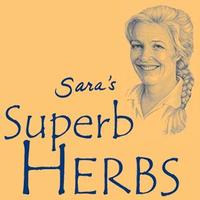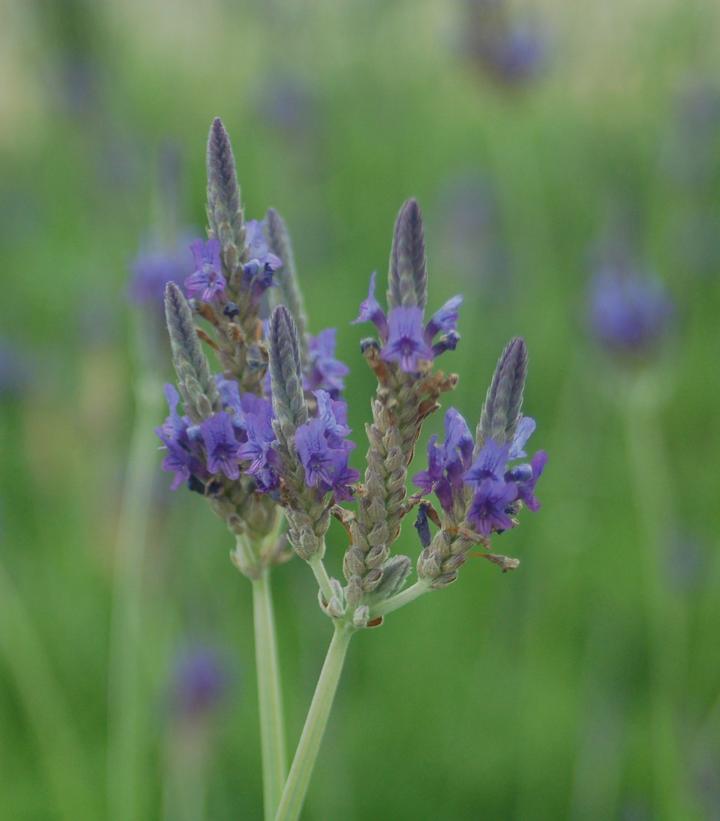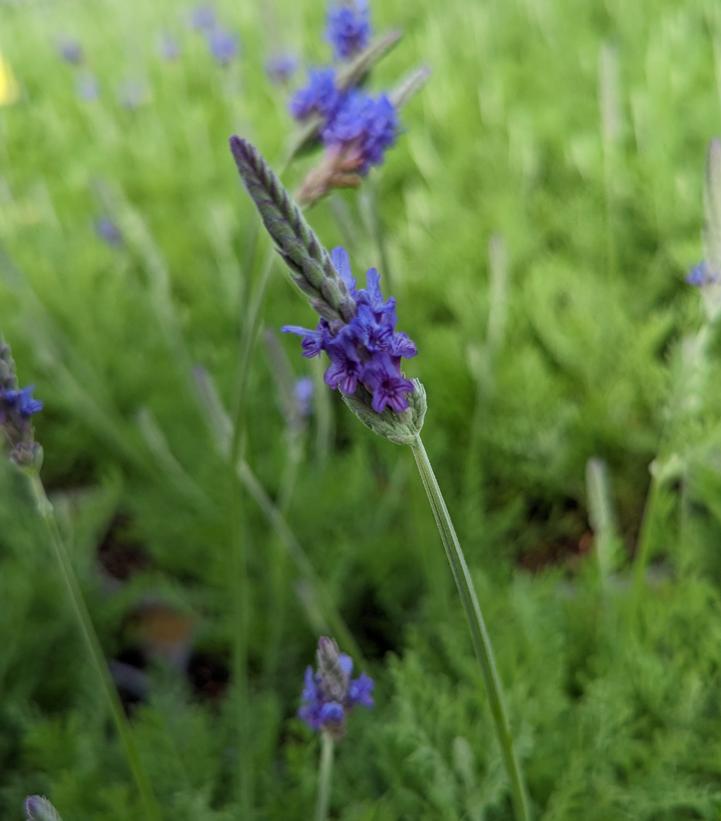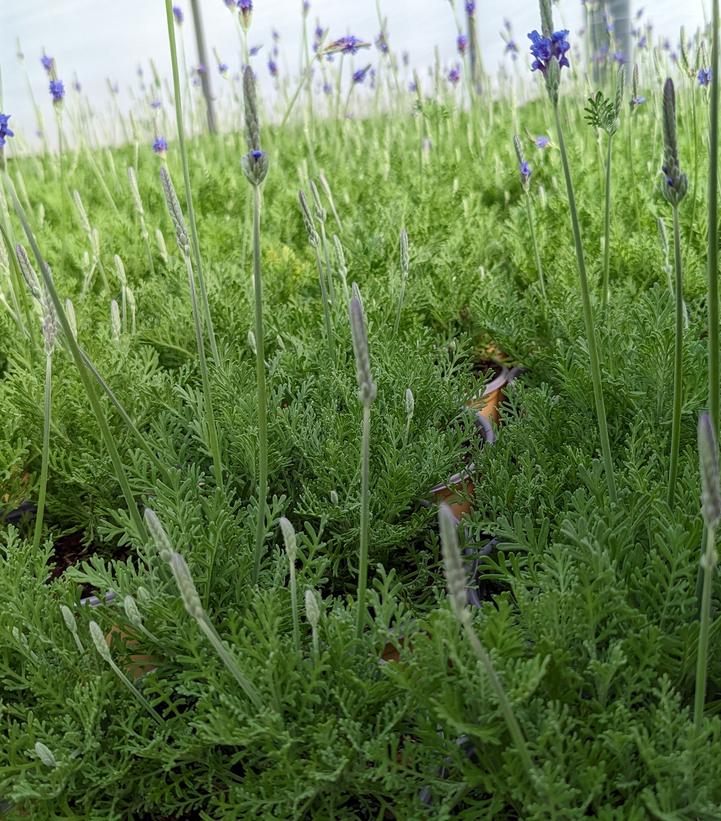« Previous Plant | Next Plant »
Lavandula pinnata
Fernleaf Lavender
- » Deeply cut, grey-green foliage
- » Fragrant lavender scent
- » Useful for food flavoring, teas, scented oils, and more
- » A heavy bloomer with lilac-blue flowers
- » Requires well-drained soil and good air flow
- » Tender perennial

- Category:Edibles
- Breeder:Sara's Superb Herbs®
- Hardiness Zone:7-9
- Height:24-36 in
- Spread:24-36 in
- Bloom Color: Purple Shades
- Foliage Color: Green Shades
What a beauty!! Deeply cut, grayish green foliage is loaded with sweet lavender scent and is prized for a multitude of uses from food flavoring, to teas, to potpourris, to scented oils and more. A heavy bloomer with deep, lilac-blue flowers, this variety demands well-drained soil and good air flow to perform its best and really showcase its beauty. Tender Perennial/Annual.
Additional Information about Lavandula pinnata
Lavandula is listed with most sources as native to the Mediterranean, but several botanists think that India may also have been part of its native range. In southern France, an entire culture has sprung up around the use of lavender as a culinary, a medicinal especially in aromatherapy, and as an ornamental. A visit to Provence in summer is a real treat for lovers of lavender. Field upon field as far as the eye can see is filled with lavender, and this is the center of France's perfume industry.
The Romans used it to disinfect their baths and most likely brought it with them when they conquered England. The colonists, in turn, took it with them to the New World. It is now cultivated throughout the world. Its botanical name, Lavandula, comes from the Latin word for "to wash". It is in the same family as mints. Notice its square stem just like members of the mint family. Varieties named after countries, especially English and French, are ambiguous. Knowing the Latin name is the only way to be 100% sure you have the correct variety.
Lavandula pinnata has fern-like leaves. The plant grows to 2 feet and the flower stems to 2 to 3 feet. It is tall. Flower spikes are in three parts resembling a pitchfork. The flowers continue to bloom through October, even when the temperature dips just below freezing five or six nights in a row. This is not a good one for drying because the flowers change quickly from blue to brown.
Harvest and Use: Lavender is more like a small shrub than a perennial and, as such, makes a fine hedge whether bordering a formal garden, creating a path to a house, or a walkway to another garden. It is stunning when grown next to deep pink, orange, yellow, or red flowers. The gray foliage can be a fine accent where that hue is desired. I like it next to my heartsease and next to my Stella d'Oro daylily and with my dyer's woad as a backdrop.
Those who don't appreciate the aroma of lavender are few and far between. Entire businesses have been built around this one herb. It would be hard to list all the uses of the herb. The leaves, stems, buds, and flowers all contain essential oils and all are valuable for different purposes. The plant can be used fresh, dry, or in essential oil form. The essential oil is used in perfumes, potpourris, sachets, soaps, cosmetics, bath oils, and massage oils. It is one of the only essential oils that is mild enough to apply directly to the skin without first diluting it in a carrier oil. Combined with southernwood or wormwood, it is an effective moth repellent. It can be a fine air freshener simmered on the back of a wood stove. A flat sachet tucked into your pillow can help you to sleep. Tuck one between the sheets in the linen closet or in the clothes drawer. Keep one in the car. Lavender holds its smell for years. Burn the stems as incense. Add drops to the final rinse for hair. Add sprigs to wreaths or nosegays. In the language of flowers, lavender represents ardent attachment, devotion, success, and luck.
Medicinally, the aroma of lavender is said to have soothing properties that relieve stress and help you sleep. A few drops of oil in a warm bath or rubbed on the temples can soothe the nerves and alleviate a headache. Fill a mask with lavender and put it over your eyes for relaxing. Drink lavender tea as a circulatory and uterine stimulant (AVOID IN PREGNANCY). Use it in salves as an analgesic for bug bites to relieve itching and reduce swelling and for mild burns. Mix a few drops in water and spray on sunburn. Mix pulverized lavender with arrowroot and white clay for baby's rash.
Lavender is a common cooking herb in southern France. One specialty of that region is a lavender cookie. It has been found in sorbets, jellies, vinegars, and baked goods. It is intense, so go lightly.
Use small hand shears to snip flower spikes. Harvest only when dew is off the plant. The time of season to harvest is when flowers have achieved full color and before the buds begin to open. Hang upside down in small bunches held together with a rubber band in a warm, dry, dark spot. The faster they dry, the better the color and fragrance will be preserved. About a week is average, depending on the humidity. Store craft material in a box as darkness will keep the color from fading. Culinary lavender can be kept dust-free in a sealed plastic bag. One of the best varieties to dry is 'Dutch Mill' because of the deep blue of the flowers. Note that Lavandula x intermedia, refers to one specific plant and the word "Dutch" is not a catch-all for all the lavender grown in the Netherlands.
Growing & Maintenance Tips for Lavandula pinnata
Cultivation and Propagation: In general, lavender is a bushy shrub whose stems become a woody tangle when mature. The whole plant is intensely aromatic. The blooms are different shades of lavender, depending on the variety. The new shoots are a bright green. They become gray-green as they mature. Most are hardy to zone 5 and all grow well from zones 5 to 8. They like a pH of 7.1. Drainage is as important a consideration when choosing lavender as is hardiness. Wet winters will kill lavender. When starting a new lavender bed, I dig a trench, line it with stone, and backfill with soil, peat, and perlite. It is a good idea to go light on the fertilizers during the growing season as plants grown in rich soil do not over- winter well. Lavender likes sandy soil in full sun and good air circulation. Starting from seed is difficult. Seeds germinate slowly and grow slowly. Often strains do not breed true from seed. Once you have healthy plants, you might try propagating from cuttings. Most first year plants do not bloom. If they do, blooms should be snipped to encourage vigor and branching. In spring each year, prune and shape plants. This encourages new growth and prevents growth of woody, gnarled stems.
Pests: Seldom a problem, but spores of Phoma lavandula on stems produce black spots that will eventually kill the plant. Remove and burn diseased plants.



